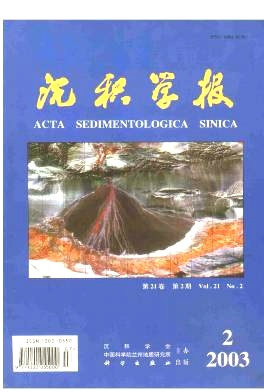|
[1]
|
浙江省区测队.1:20万建德幅区域地质矿产调查报告[R].杭州:浙江省地质局,1965[RGSZP(Regional Geological Survey of Zhejiang Province). Report of regional geology and mineral resources in Jiande of Zhejiang Province [R]. Hangzhou: Zhejiang Geological Bureau, 1965] |
|
[2]
|
浙江省区测队.1:20万临安幅区域地质矿产调查报告[R].杭州:浙江省地质局,1967[RGSZP.Reportof regionalgeology andmineral resources in Lin'an of Zhejiang Province[R]. Hangzhou: Zhejiang Geological Bureau,1967] |
|
[3]
|
浙江省区域地层编写组.华东地区区域地层表浙江省分册[M].北京:地质出版社,1979[Cormpiling group ofthe regional stratigraphy of Zhenjiang Province. Zhejiang fascicule of the regional stratigraphy in East China [M]. Beijing: Geological Publishing House, 1979] |
|
[4]
|
罗璋,葛凡凡.浙江省上震旦统、下古生界沉积环境及相分析[J].浙江石油地质,1982,(1):12~17[Luo Z.Ge H H Sedimentary environment and facies of the Upper Sinian and Lower Paleozoic in Zhejiang Province, China [J]. Zhejiang Petroleum G-eology, 1982, (1): 12~17] |
|
[5]
|
浙江省地质矿产局.浙江省区域地质志[M].北京:地质出版社,1989 [ ZGB (Zhejiang Geological Bureau). The chronicle of Zhejiang geology [M]. Beijing: Geological Publishing House, 1989] |
|
[6]
|
俞国华(主编).浙江省岩石地层[M].武汉:中国地质大学出版社,1996 [Yu G H(editor). Stratigraphy (lithostratic) of Zhejiang Province [M]. Wuhan: China University of Geosciences Press, 1996] |
|
[7]
|
鞠天吟.对苏杭地区早古生代地层的认识(苏杭扬子-江南型沉积过渡区的特征)[J].地层学杂志,1979,3(4):294~303[JuT Y.Cognition of the Early Paleozoic Group in the Su-Hang region[J]. Journal of Stratigraphy, 1979, 3(4) :294~303] |
|
[8]
|
高振中.深水牵引流沉积-内潮汐、内波和等深流沉积研究[M].北京:科学出版社,1996[Gao Z Z.Deep-water tractive current deposits-The study of internal-tide, internal-wave, and contour current deposits[M]. Beijing: Science Press, 1996] |
|
[9]
|
何幼斌,高振中,李建明等.浙江桐庐晚奥陶世内潮汐沉积[J].沉积学报,1998,16(1):1~7[HeYB,GaoZZ,Li JM,et al.Internaltide deposits of the Late Ordovician in Tonglu, Zhejiang [J]. Acta Sedimentologica Sinica, 1998, 16(1) :1~7] |
|
[10]
|
周名魁,王汝植,李志明等.中国南方奥陶志留纪岩相古地理与成矿作用[M].北京:地质出版社,1993[Zhou M K,Wang R Z,Li Z M. Ordovician to Silurian lithofacies, paleogeography and mineralization in South China [M]. Beijing: Geological Publishing House,1993] |
|
[11]
|
李从先,张桂甲,李铁松.潮坪沉积的韵律性与作用因素的周期性[J].沉积学报,1995,13(增):71~77[Li C X,Zhang G L Li T S.Rhythms of tidal flat sedimentation and cyclicity of affecting factors [J]. Acta Sedimentologica Sinica, 1995, 13(Supp. ): 71~77] |
|
[12]
|
罗璋.浙江桐庐于潜上骆家上奥陶统浊积岩[J].浙江地质,1990,6(1):20 ( 29 [Luo Z. Upper Ordovician turbidite in Yuqian County,Zhejiang Province [J]. Zhejiang Geology, 1990, 6(1): 20~29] |
|
[13]
|
王鸿祯.中国古地理图集[M].北京:地图出版社,1985[WangHZ.Atlas of the palaeogeography of China [M]. Beijing: Cartographic Publishing House, 1985] |
|
[14]
|
夏邦栋,吕洪波.浙西皖南晚奥陶世复理石的沉积环境,兼谈鲍马层序应用问题[J].沉积学报,1988,6(4):44~51[Xia B D,Lu H B. A study on the environment of Upper Odoovician Flysch in western Zhejiang and southern Anhui provinces and a short comment on the application of Bouma' s sequence [J]. Acta Sedimentologica Sinica,1988, 6(4): 44~51] |
|
[15]
|
蔡进功,李从先.浙西桐庐县桐君山下志留系安吉组风暴沉积[J].同济大学学报,1990,18(3):363~372[Cai J G,Li C X.Storm deposition of Anji Formation of Silurian, Tonglu County, Tongjun Hill,Western Zhejiang Province[J]. Journal of Tongji University, 1990,18(6):363~372] |
|
[16]
|
冯增昭(主编).沉积岩石学[M].北京:石油工业出版社,1994.[Feng Z Z.Sedimentary Petrology(Second edition) [M]. Beijing:Petroleum Industry Press, 1994] |
|
[17]
|
余素玉,何镜宇.沉积岩石学[M].武汉:中国地质大学出版社,1989[Yu S Y, He J Y. Sedimentary Petrology [M]. Wuhan: China University of Geosciences Press, 1989] |
|
[18]
|
李从先,汪品先.长江晚第四纪河口地层学研究[M].北京:科学出版社,1998.[Li C X,WangPX.LateQuaternary stratigraphy of the Yangtze Delta [M]. Beijing: Science Press, 1998] |
|
[19]
|
Li C X, Wang P, Fan D D. et al. Open-coast intertidal deposits and the preservation potential of individual lamina: a case study from Eastcentral China [J]. Sedirmentology, 2000, 47:1 039~1 051 |
|
[20]
|
Fan D D, Li C X. Rhythmic deposition on mudflats in the mesotidal Changjiang estuary, China [J]. Journal of Sedimentary Research,2002, in press |






 DownLoad:
DownLoad: